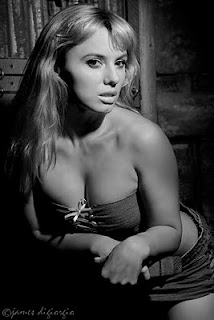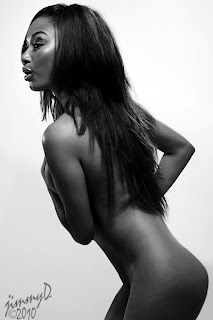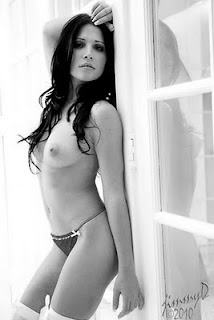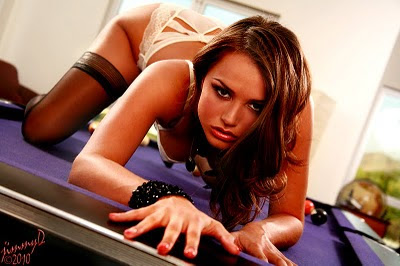
Generally, the brightest area of a directional light source is at it's center. On a strobe, it's where the flash tube is positioned. As such, as you move away from that center (to the right, left, up or down around its perimeter) the intensity and efficiency of the light diminishes. In other words, the light begins to fall-off or gradually decline in brightness from its source or, in the parlance of photographers,
feather.There are a variety of ways to
feather the light outside of its natural disposition to do so around its perimeter and extending outwards.
Beauty beauty dishes, for example, are specifically designed to fall-off, or
feather, sometimes as much as a half-stop from the center of the dish to the outer perimeter of the dish. (That's how Mola beauty dishes behave.) Obviously, as you move even further away from the outer perimeter of the dish, the light will fall-off even more dramatically.
Using a Fresnel lens and focusing or unfocusing the light is another way to
feather or produce a graduated fall-off around the perimeter of the lens. Focusing of Fresnel lighting instruments is accomplished by moving the lamp (or whatever is providing illumination) closer or further away from the Fresnel lens.
When you feather the light you'll notice a fall-off (or diminished exposure) from the brightest point made by the light to the dimmest. The more gradually or subtly the light falls-off the more aesthetically pleasing it often appears. The more pronounced the
feathering, the more dramatic the image will sometimes seem.
Feathering is another technique which belongs under the broader heading of Light Control.
If you're using a light source that is not designed to produce fall-off, like a beauty dish or Fresnel lens, you can still
feather the light by angling it away from the subject. The degree to which the light is feathered will depend on the angle it is turned away from your subject or model, as well as the distance between the light source and model. A light source placed close to the model will produce light with the softer (or more subtle) feathering. The elements of angle and distance work in concert to produce more or less obvious
feathering.
If you're using modeling lights, you should be able to see the
feathering effect on the subject when you play around with varying degrees of angle coupled with various distances between the light source and the subject. If you're shooting digital, as most of you probably are, a quick review of the images will tell you how pronounced the
feathering effect becomes as you adjust the position and direction of the light.
Large soft boxes are sometimes difficult to use when attempting to produce a noticeable
feathering effect. Some soft boxes are designed to minimize brightness in the center (i.e., less of a center hot spot) by using a 2nd, internal baffle. They are also shaped to disperse the light evenly over a larger surface. In other words, the larger the source the more difficult it will be to produce a
feathered effect across a small target area like a model's face. A smaller source, therefore, will produce more noticeable
feathering. I sometimes use a a bare bulb with a small reflector (and with a small, honeycomb grid affixed in front of it) to produce more obvious fall-off across a small target area. By angling this light source and adjusting the distance to the subject, I can see the amount of
feathering it's producing.
Next time you're model shooting and, while setting your lighting, try
feathering one of your lights. You might like the results!
The pretty girl at the top is Margo. I used a single light source, modified with a Fresnel lens and aimed and focused on her face. You can see the
feathering or fall-off of the light. To me, and beyond the model and her wardrobe, it helps give the image a retro feel-- Sort of like from a Hollywood "B" sci-fi movie. I expect to see a big, hairy, gorilla's hand coming in from somewhere off-camera to grab her.
 Well, another year comes to a close and, along with it, the first decade of the new millennium lies behind us as well. You'll have to wait a thousand years for another 1-1-11 to come along!
Well, another year comes to a close and, along with it, the first decade of the new millennium lies behind us as well. You'll have to wait a thousand years for another 1-1-11 to come along!
























